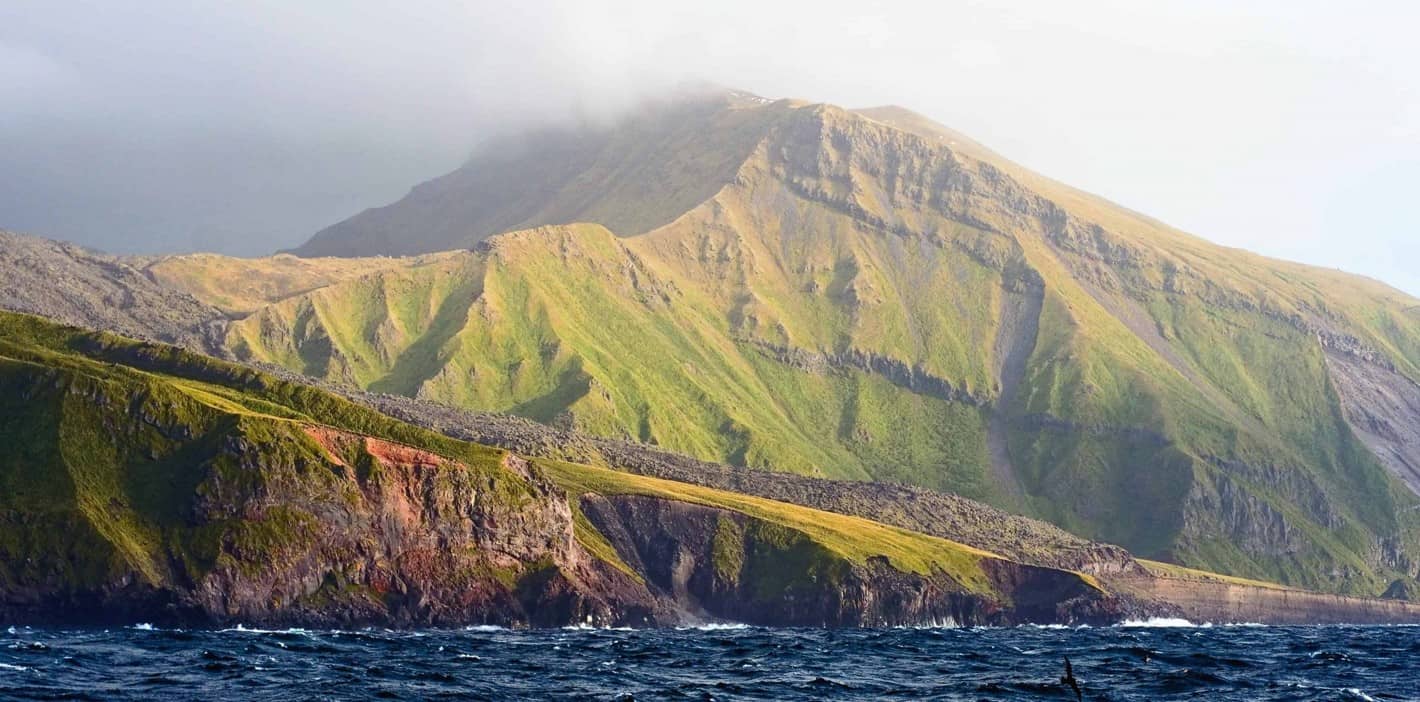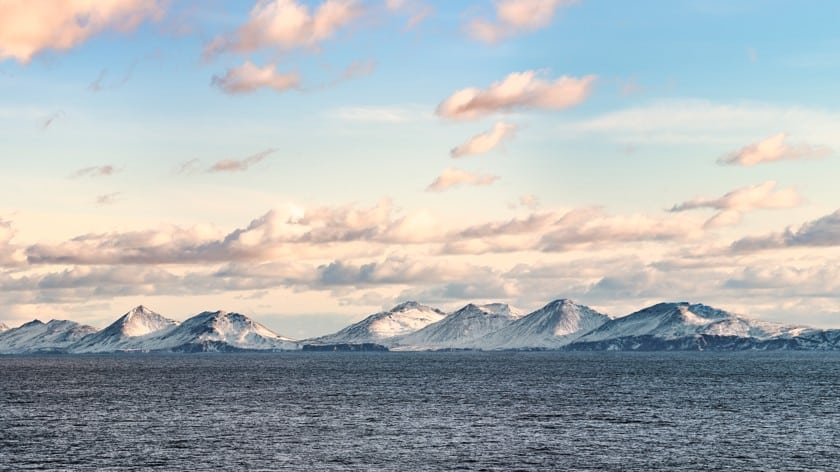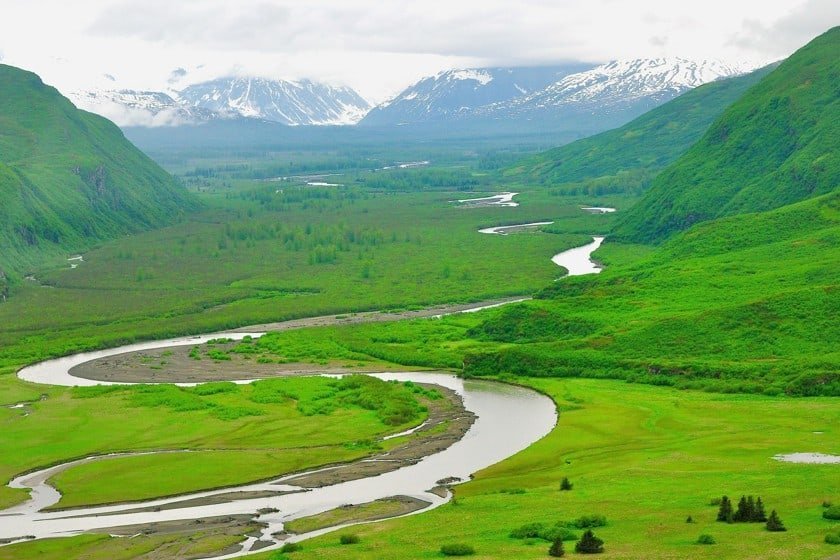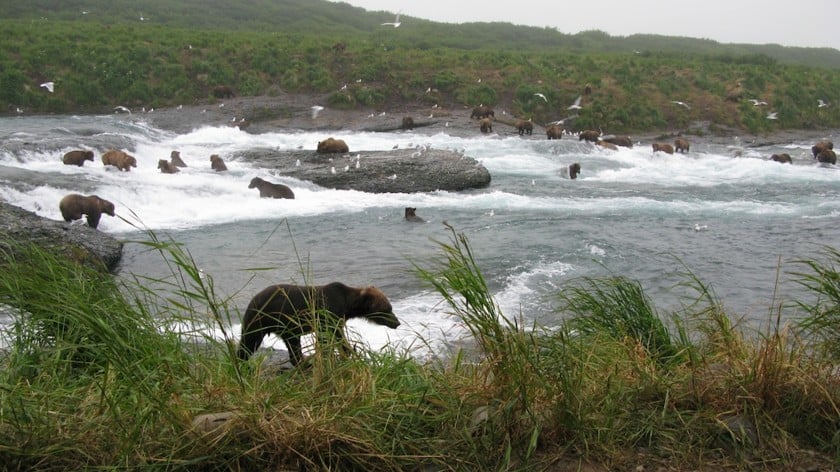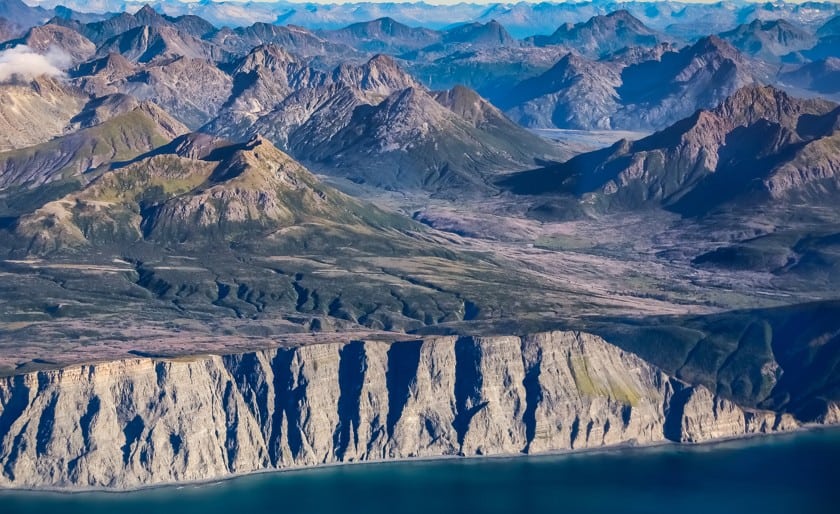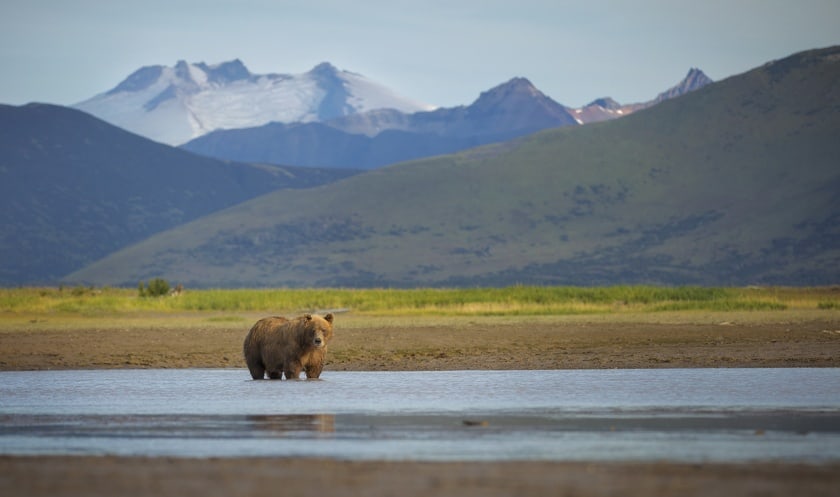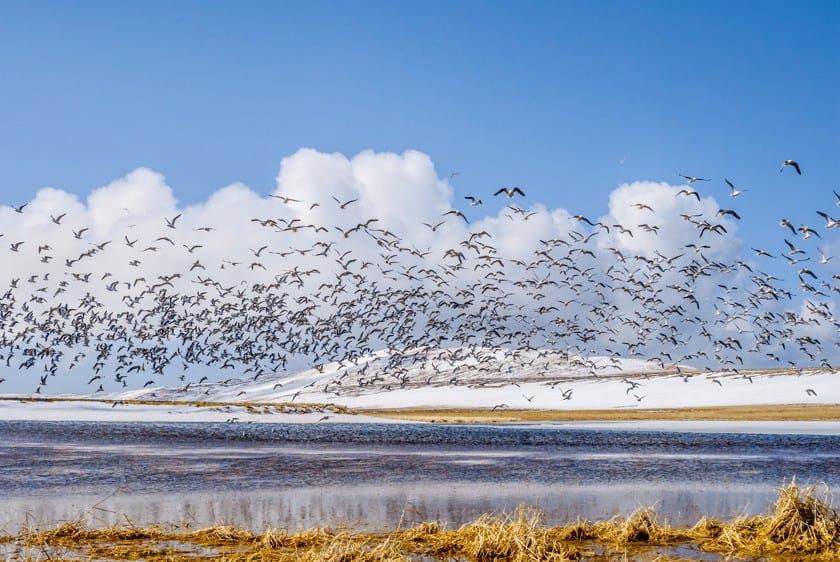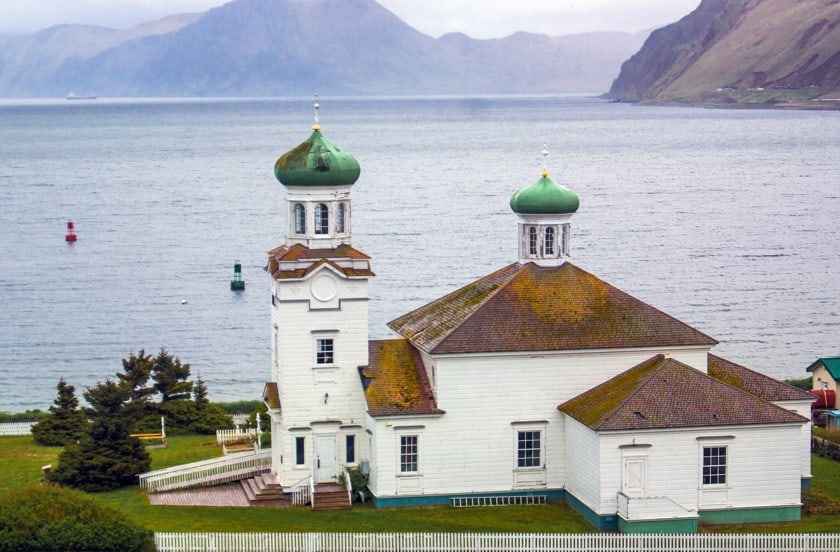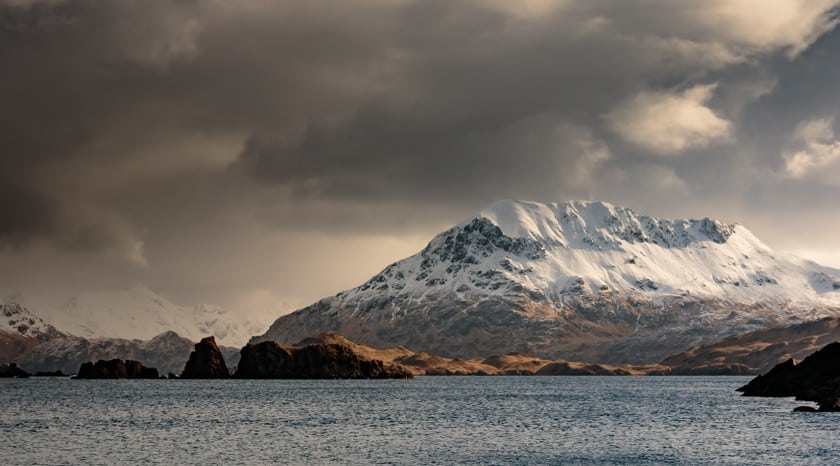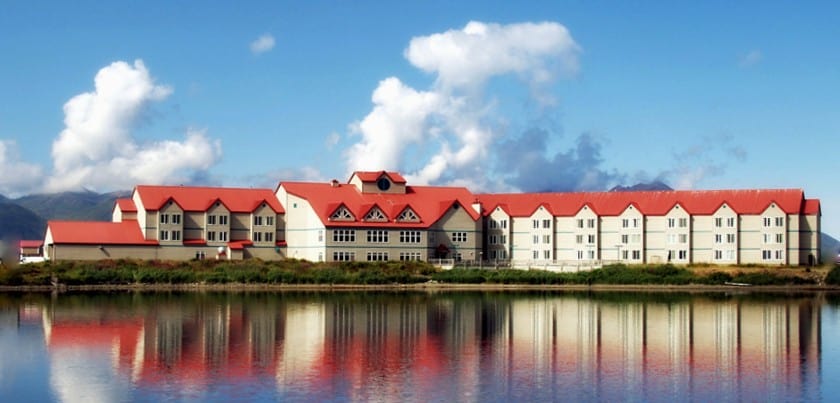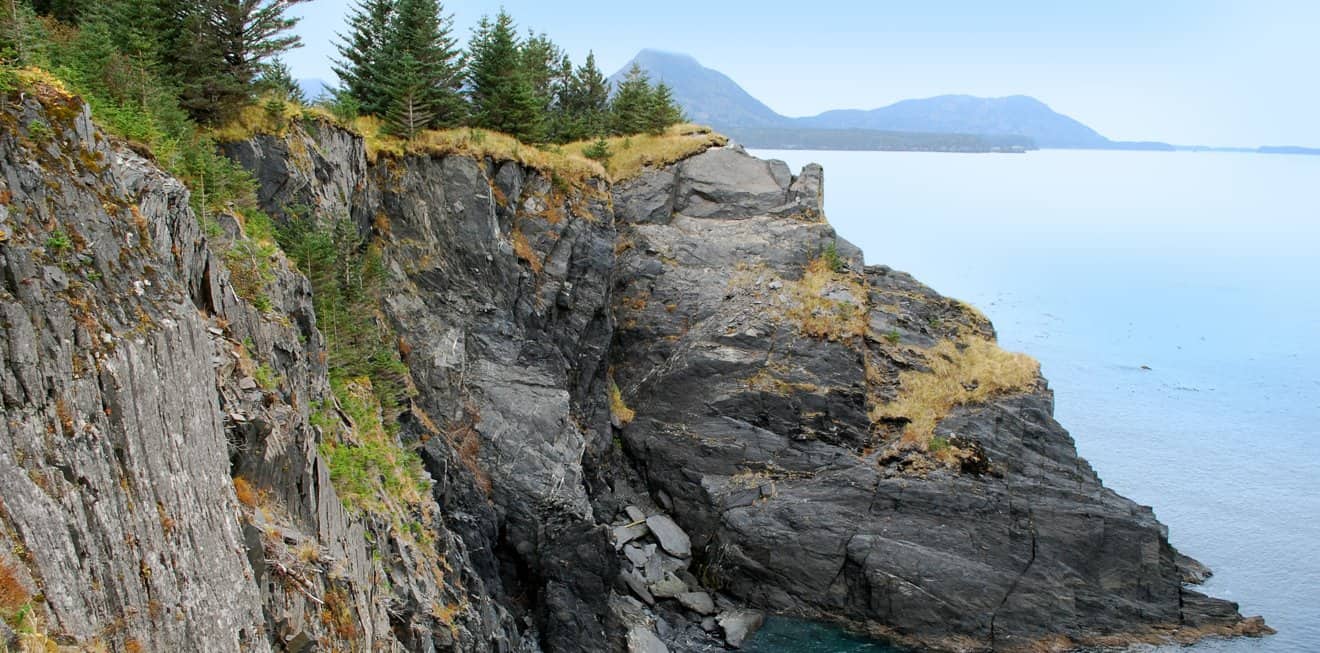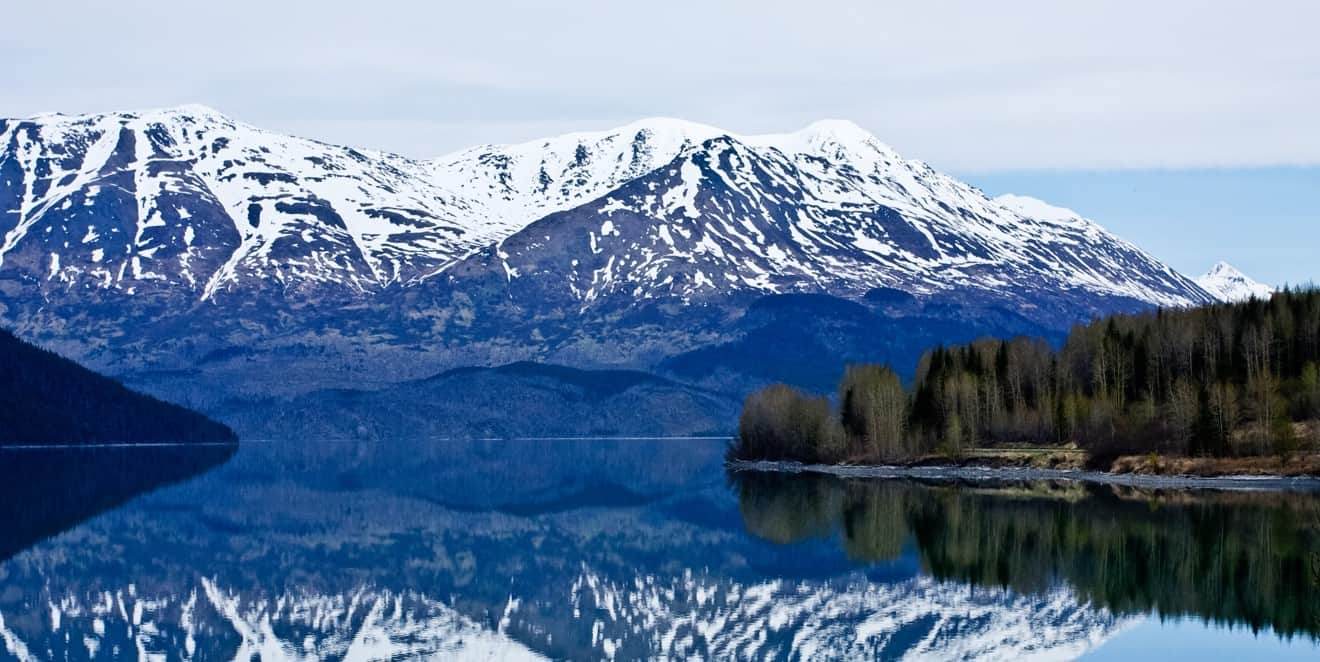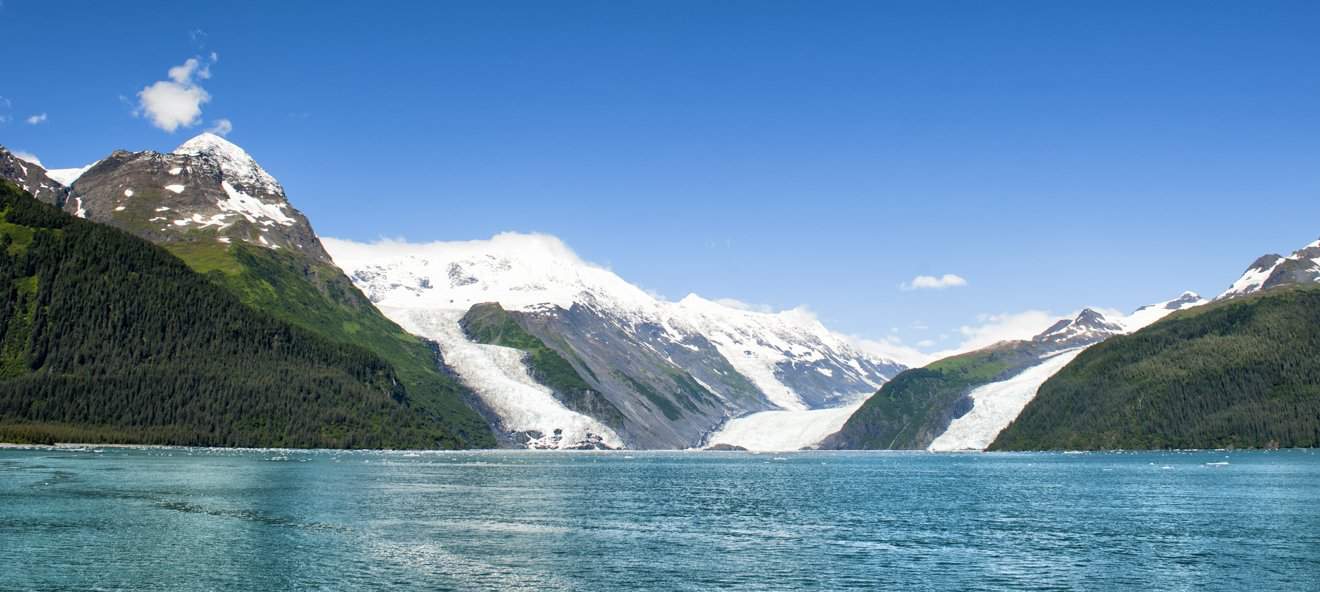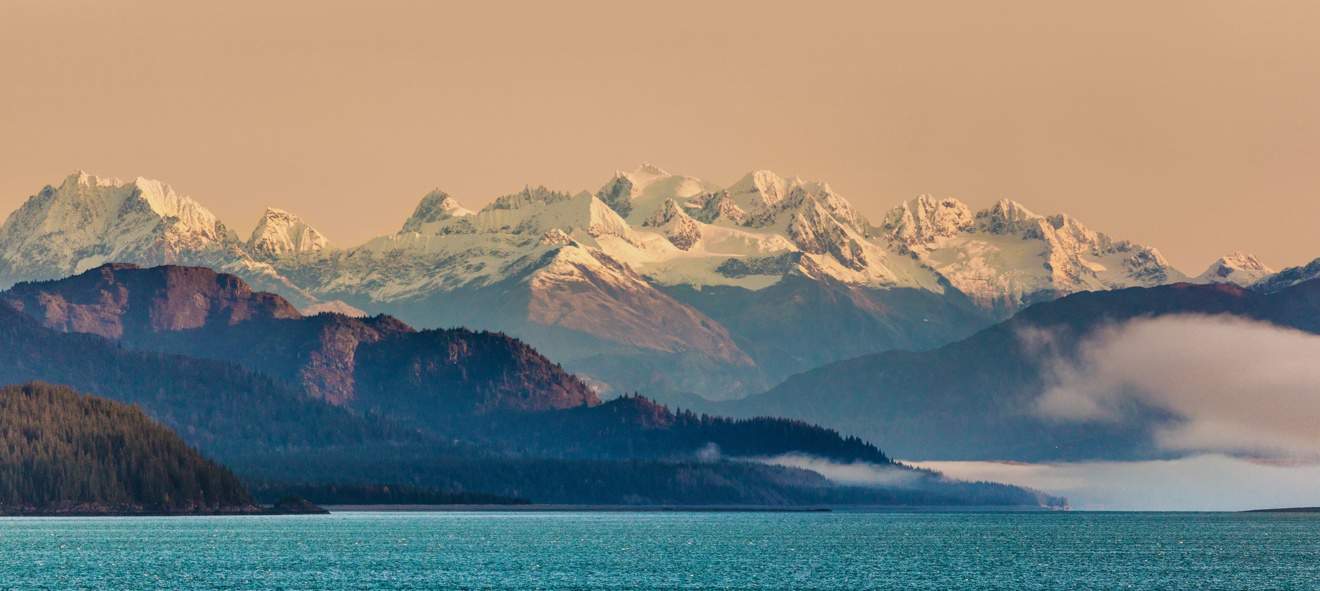About 300 islands distributed over an arc of 1100 miles (plus about 800 miles of the Alaska Peninsula) form the Aleutian archipelago. These islands, that are nothing more than the tips of a large underwater volcanic mountain range that connects the American and Asian continents, are among the most pristine places in the state. Those searching for nature that is still intact, where millions of seabirds find their habitat amidst the sea and the volcanoes, cannot miss a visit to the archipelago. The large peninsula that gives way to the arc that crosses the North Pacific is no less important: here too there are few inhabitants and even fewer connections, but the natural attractions abound.
Contents
How to get there
Obviously, the islands of the archipelago are accessible only by sea or air, and even the Alaska Peninsula is not accessible by land: not even a road connects it to the rest of the state. Let’s see what connections actually do exist.
- Ship. The ferries of the Alaska Marine Highway System connect the Alaskan Peninsula, or more precisely the ports of Chignik, King Cove and Cold Bay, to the rest of the mainland. The main ports here are Homer and Whittier, from where it is easily possible to reach Anchorage, the main Alaskan port of call. Also some islands are connected by ferries, in particular Unalaska Island (Dutch Harbor), Akutan Island (Akutan Harbor), Unimak Island (False Pass Harbor) and Popof Island (Sand Point Harbor). Most of the other islands can be reached by private boat, but are not connected by public service.
- Airplane. The fastest way to reach both the peninsula and the islands is by air. The archipelago’s main airport is Unalaska, which is well connected to Anchorage and other smaller Alaskan airports. The two main stopovers on the peninsula are King Salmon (in the eastern area, near Katmai National Park and Preserve) and Cold Bay (in the extreme western tip, where there is the Izembek National Wildlife Refuge).
Alaska Peninsula and Aleutian Islands Climate
The archipelago’s climate is oceanic, with much more uniform and moderate temperatures than the Alaskan interior. Summers are cooler than in the main Alaska locations, but there is no wide seasonal temperature range, so winter temperatures are only slightly lower than summer temperatures. In Unalaska, the hottest months – July and August – have daytime highs averaging 57/59° F and nighttime lows averaging 46/48° F.
In the coldest month, January, the maximum is on average 35/37° F and the minimum is 26/28° F. Rain is abundant on all the insular and peninsular arch, with constancy and regularity during the whole year. In Unalaska there are more than 59 inches of rain per year: the rainiest months are the winter ones: from October to March there are more than 20 days of rain per month. The recommended time to visit this area of Alaska is the height of summer.
In winter, bad weather takes over, and while temperatures are not as freezing as those in Fairbanks or other inland cities, these are not places where it is pleasant to be in the rain or snow. In addition, many of the islands may be difficult, if not impossible, to reach by either plane or boat due to the impassable weather conditions.
Things to do in the Alaska Peninsula Area
Also known as the Aleut Peninsula, the Alaska Peninsula stretches for about 500 miles to the southwest of the continent and has two types of terrain that flank each other along its length. The southern side is rugged and mountainous: born from the tectonic activity of the North Pacific plate pushing under the North American plate. The north coast, on the other hand, is flat and marshy.
The small communities of the peninsula are inhabited mainly by native Alutiiq, the same ethnic group that populates the archipelago of Kodiak, and who base their livelihood almost exclusively on fishing. Today, a large part of the peninsula is protected as natural reserves, each of which has different characteristics.
Lake Clark National Park and Preserve
On the opposite shore of Cook Inlet from Anchorage, in that part of the mainland that precedes the actual development of the peninsula, we find Lake Clark National Park and Preserve. This nearly 40 mile-long lake that gives the preserve its name is a major attraction, but not the only one. The park is also home to two volcanoes over 9850 feet high, as well as pristine forests and a coastline that is one of the richest in seabird colonies.
Port Alsworth is the reference point for every visit to the park. It is home to the park’s headquarters and is the starting point for several hiking trails along the shore of Lake Clark. Port Alsworth and every other part of the park can only be reached by airplane. Small airplanes or seaplanes allow you to reach the different areas. On the official page, you can check which connection is right for you. The Port Alsworth visitor center is open only in summer, as well as most of the trails. On this page you can check which areas are accessible according to the period in which you will be there.
McNeil River State Game Sanctuary
Many call it the best place in the world to observe grizzlies: this protected area actually boasts one of the highest concentrations of these bears in the world. The reason is quite simple: salmon are abundant, but compared to other rivers, they have a hard time going up the McNeil River due to the many low waterfalls that characterize it. In short, the ideal fishing area for a hungry bear. Not everyone, unfortunately, gets to visit the McNeil River State Game Sanctuary.
Only 150 to 250 permits are raffled off each year to travel to compete with grizzlies in salmon fishing. If you’re one of the lucky ones, you’ll have to budget several hundred dollars to pay for the permit and especially the plane to get you and your fishing and camping gear to the river. Then you’ll have to walk over 1.8 miles with your feet in the bog to a 172 sq feet platform shared by ten anglers. Only at that point, protected by an armed ranger, can you spend a day fishing (probably in the rain, given the high probability of precipitation in this area), trying not to get your salmon stolen by bears that move around just a few foot from the platform. You can find additional details on the park’s official page.
Katmai National Park and Preserve
Visiting Katmai National Park is an unforgettable experience because of the volcanoes: as many as 15 of them, some of which are perpetually smoking. Furthermore, between 1500 and 2000 bears live in the forests that grow up the slopes of these mountains. This park too can only be reached by plane: from Anchorage you can fly to the tiny town of King Salmon, where the tourist office is located.
From here, you will have to get on a seaplane to Brooks Camp, in the heart of the park: flights are daily between June and September. From the campground, where there is also a small visitor center, many hiking trails branch off and some guided tours depart. The most famous is the Three Forks Overlook, an eight-hour bus ride that takes you to the Valley of Ten Thousand Smokes. The name of this valley, famous for its lunar landscape, is due to a gigantic volcanic eruption that in 1912 buried it under 650 feet of ash, from which spirals of steam rose for years.
Less than 0.6 miles from Brooks Camp, you can find the Brooks Falls. Next to these falls there are two platforms that allow you to safely observe the bears engaged in salmon fishing. Of course, all the tourists who visit the park come here. That’s why, in order to avoid problems, the rangers only allow you to stay only for one hour to observe the large animals. Those who want to rely on an organized tour in this region can take a look at the link below:
Katmai National Park Flight Tour
Alaska Peninsula and Becharof National Wildlife Refuges
Ten thousand caribou graze undisturbed in this reserve created to protect wildlife. Beside them, bears and moose, seals and birds of all kinds live in harmony. The main attraction of this area are the Ukinrek Maars: circular craters generated by a long series of eruptions in 1977. No less interesting are the high rocky spires with light and dark layers on the coast, called Castle Cape Fjords. To visit these areas you must go to King Salmon and refer to the visitor center.
Izembek National Wildlife Refuge
This wildlife haven lies near Cold Bay, at the tip of the peninsula. There is no shortage of large mammals here either, but in the bay that the park overlooks, whales, both gray whales and minke whales, abound. What makes this park unique, however, are the migratory birds, which arrive in colossal flocks to feed in the rich Izembek Lagoon. Cold Bay can be reached either by plane or by ferry: from here you can rent a car and venture into the park along the 40 miles of dirt roads that run through it.
Visiting the Aleutian Islands
This remote archipelago is sparsely inhabited by humans, but is home to many marine species, mostly birds, making it a bird watcher’s paradise. Most of the archipelago is part of the Alaska Maritime National Wildlife Refuge and only about ten islands are inhabited. The two main and most easily accessible islands are Unimak and Unalaska, on which city of the same name is located. Half of the approximately 8000 inhabitants of the archipelago live here. Most of the citizens are of Unangan ethnicity.
This people, also known as Aleuts, lived in peace on these islands until 1700, when they were exterminated by Russian fur trappers, bringing their numbers down from 20,000 to just a few thousand. Today those who go to the archipelago do so mainly for two reasons: nature tourism (mainly for seabirds and whales) and fishing. If you’re a fisherman, there’s no doubt about it: take a flight to Unalaska. If, on the other hand, you want to return home loaded with spectacular photos, the islands of the marine protected area await you.
Alaska Maritime National Wildlife Refuge
More than 2,500 islands, bays, reefs and stretches of Alaskan coastline make up this vast marine reserve, where hundreds of animal species live without being threatened by humans. Part of the reserve covers areas of the Alaska Peninsula, Kodiak Archipelago and other island groups, but the Aleutians make up the hard core. Most of the natural park’s points of interest can only be reached by chartering small planes or boats. If you plan to devote part of your trip to Alaska to the natural beauty of this reserve, choose which islands to visit carefully, as connections are not fast or frequent and you cannot improvise.
Which islands to visit
Unalaska is the reference point of the archipelago. On this island you can find the Museum of the Aleutians, where you can discover the culture of the indigenous people and the history of these islands. You can also visit 25 prehistoric sites: the oldest, Unalaska Bar, dates back 9000 years. The Russian period is highlighted by the Church of the Holy Ascension, while the more recent war period can be experienced at the Aleutian World War II National Historic Area.
The small Amaknak Island is connected to Unalaska by a bridge and can easily be visited. One of the most popular tours for visiting the Aleutians is aboard the Alaska Marine Highway System’s scheduled ferry, which connects Kodiak to Unalaska and runs every two weeks from April to September. You can take the ferry as early as Homer and it will cost a few hundred dollars, but it’s the only way to see numerous protected sites that can’t be reached any other way. The ferry trip takes a few days, so from Unalaska it is more convenient to fly back to Anchorage.
One of the most interesting islands to visit is Adak Island. If you look at the map you’ll see that it is located in the middle of the island arc, in the middle of the North Pacific. You can get there by plane: there are two flights a week from Anchorage. A small village, which once served the now-closed Navy base, is home to 80 people. It is, however, one of the best places to go trekking in the most uncontaminated nature, admiring large colonies of seabirds.
The furthest of the Aleutians is Attu Island, located 1000 miles from the American mainland. It is famous for being one of the best islands in the world, where you can see and photograph seabirds of dozens and dozens of different species, with the characteristic of hosting both American and Asian species, given the central location between the two continents. Once it was reachable by plane thanks to an airstrip dating back to the Second World War. Today instead you can go there only by boat, but it is not easy to find one and they are expensive. St.Paul Island is instead more northern, in the middle of the Bering Sea, and is the main one of the Pribilof Islands. It too can be reached by plane from Anchorage. Here every summer thousands of seals gather to breed: a spectacle difficult to find in other parts of the world.
Where to stay
Both the peninsula and the archipelago have very few accommodations. In the peninsula’s natural parks, you will have to rely mostly on campsites or lodges set amidst the nature, about which you can find information by contacting the visitor centers. As far as the islands are concerned, in Unalaska the hotel of reference is the Grand Aleutian Hotel.
